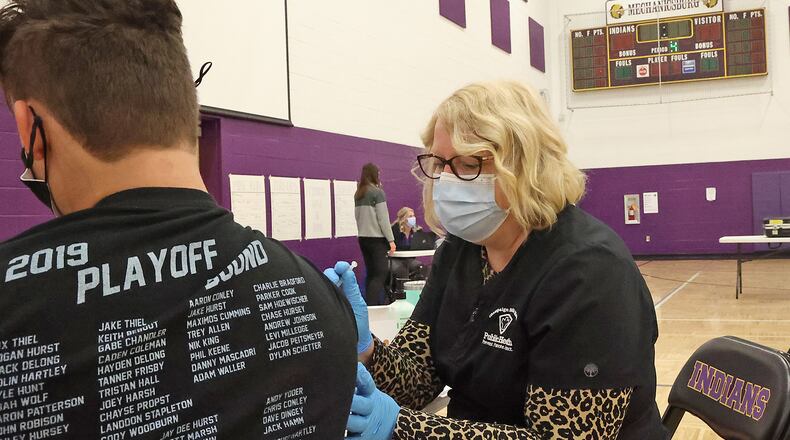“It is clear that we will need to let this decision to be made by the parents and this decision to be made by the schools,” Gov. Mike DeWine said Monday afternoon.
The guidance will be released no later than tomorrow, Vanderhoff said Monday.
“Issuing this guidance will allow school districts to have the flexibility and the support they need to provide in-person learning five days a week,” he said. “We are building upon the layered prevention strategies that were remarkably effective last school year.”
The guidance is taking a three-part approach, including strongly recommending the COVID-19 vaccine for staff and eligible students and masks for the unvaccinated as well as other prevention strategies, such as improving ventilation, good hand sanitation and maximizing distance between people.
“Wearing masks protects students, teachers and staff from COVID-19,” Vanderhoff said. “This is especially important indoors and crowded settings where physical distance cannot be maintained and for individuals who aren’t’ fully vaccinated. We encourage consistent and correct mask use in the schools for anyone who is unvaccinated which includes wearing masks indoors at school.”
Vaccination and masks are two tools Ohioans should use if they want their children to stay in school, DeWine said.
“I desperately want to see our kids in school this year,” he said. “We do not want to go through a year where they’re in and out of school. We do not want to go through a year where many of them are remote. This is how we do it.”
The governor also said he does not believe there’s “an appetite” in the state for mandated masks in schools.
Vanderhoff added that generally masks aren’t needed when outside, including during recess or physical education activities. He encouraged schools to utilize outdoor learning and outdoor activities when possible.
Nearly 550 daily cases of coronavirus were reported in Ohio Monday as health officials shared concerns about a new wave in the pandemic.
The state recorded 543 cases in the last day, according to the ODH. It’s the ninth time in the last 21 days Ohio has reported more than 500 cases in a day.
Over the last three weeks the state is averaging 483 cases a day, but in the last week Ohio is averaging 696.85 cases a day.
“After a period of steady decline we continue to see a pattern of COVID-19 cases rising again in Ohio,” Vanderhoff said Monday.
Credit: Nick Graham
Credit: Nick Graham
As of Thursday, Ohio reported 45.8 cases per 100,000 people over a two-week period. That’s up from the 27 cases per 100,000 people reported on July 15 and the17.6 cases per 100,000 reported on July 7.
“All signs point toward this increase of cases being the Delta variant, which is more contagious than the B.1.1.7 or alpha variant the proceeded it,” Vanderhoff said. “It simply takes less of this virus to spread from the mouth or the nose of an infected persons to that of another non-infected person.”
All three vaccines available in the U.S. offer protection from covid-19 and the Delta variant.
As of Monday, 5,717,753 people in Ohio have received at least one dose of the vaccine and 5,347,696 have finished it, according to ODH.
About the Author

